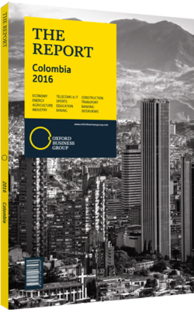Rafael Mejía López, President, Colombian Agriculture Association (SAC): Interview

Interview: Rafael Mejía López
How will Colombia’s internationalisation policy affect the future agricultural trade balance?
RAFAEL MEJÍA LÓPEZ: The sector grew 2.3% in 2014, exporting $7.26bn and importing $6.24bn worth of goods. In value terms, exports grew 10.3%, which is translated into 13% more in exported tonnes. Regarding imports, we also grew 2% in value and 4.5% in imported tonnes. It is important to analyse both volume and value because, despite these satisfactory results, the drop in prices and the increase in exports has not translated into greater profitability. Coffee, bananas and flowers continue to be the cornerstones of the sector and account for 65% of total agricultural exports. Without coffee, the trade balance would have a deficit of $1.5bn. Local demand has certain limitations, but the growing global demand for food can be partially filled by competitive exports coming from Colombia. According to the IMF, long-term perspectives show Colombia’s GDP growing at 4.1% until 2020. There are opportunities in a number of agriculture industries, given free trade agreements that were recently signed to open up our export markets. Net benefits of trade agreements for Colombia’s agriculture are yet to be achieved, since the US, Canada and the EU are net food exporters to Colombia, though South Korea is a net importer. After South Korea, the next Asian countries currently being targeted to step in are Japan and China.
What infrastructure upgrades need to be prioritised in the agriculture sector?
MEJÍA: Colombia has more than 21m ha of fertile agricultural land, but only 5m ha are currently being cultivated. There are vast areas lacking either the necessary infrastructure or the authorities who are willing to increase the availability, capacity and productivity of agricultural land. We need to prioritise both road and water infrastructure, and all the related ministries are making efforts in this respect.
Colombia has a high level of rainfall, averaging 3.2 metres-per-year, with huge intra-annual and regional variations, of which 1.85 metres can be used after natural evaporation. We need a more efficient water management strategy, as our water resources are our greatest opportunity to tap into the growth in global demand for food. We currently do not have sufficient capacity to store water, so there is a need for dams and reservoirs. This infrastructure does not have to be mega-projects and they can be built relatively easy.
Road infrastructure, logistics management and trained human capital are necessary for agricultural and industrial development. In this regard, the government is using all available financial resources to solve these issues through the National Infrastructure Agency, as well as the ministries responsible for housing, health, social protection and defence.
More than 30% of the country is rural, and the agriculture sector has significant growth opportunities. However, these opportunities aren’t only in the fields but also in the infrastructure. That is why the National Development Plan involves all ministries and is intended to reduce the social inequity and the poverty gap between rural and urban regions.
What measures should Colombia take to reduce exposure to the price volatility of commodities?
MEJÍA: The present situation is a result of the drop in global oil prices, coupled with the ongoing volatility of the Colombian peso and drought effects caused by El Niño. These changes were brought about by macroeconomic factors, and Colombia is not immune to their effects. Food inflation in 2015 was 10.85%, while general inflation was 6.77%, well above the target band of 2-4% set by the Banco de la República. Import substitution is one way we might reduce our vulnerability to changes in commodity prices. To encourage investment in production we need to offer a favourable environment that guarantees stability and security.
You have reached the limit of premium articles you can view for free.
Choose from the options below to purchase print or digital editions of our Reports. You can also purchase a website subscription giving you unlimited access to all of our Reports online for 12 months.
If you have already purchased this Report or have a website subscription, please login to continue.

